2021 | Berlinale Shorts
“Tell Me about Yourself so that I Can Understand the World”
How is the section responding to these unusual times and what does this year's selection hold in store for the audience? A conversation with section head Anna Henckel-Donnersmarck.
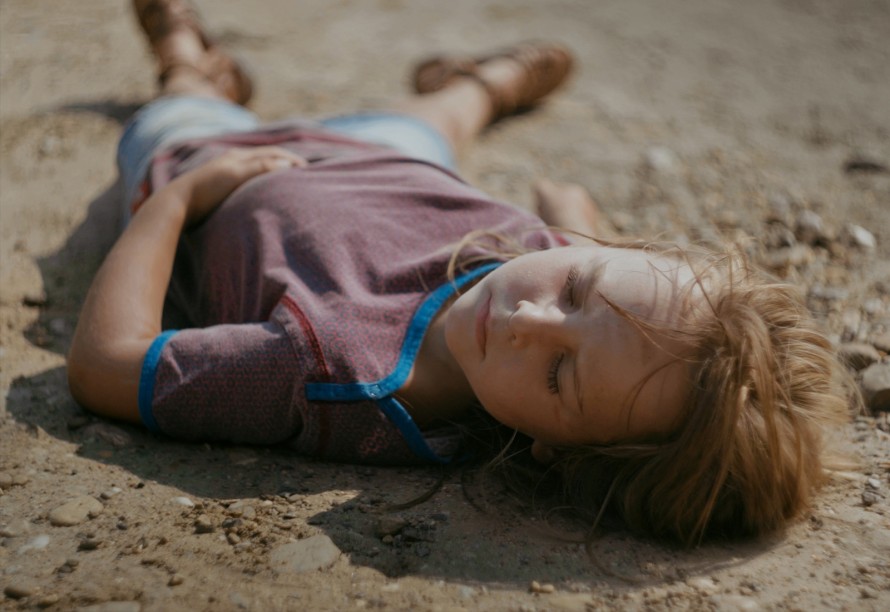
Lucie Wyns in Zonder Meer by Meltse Van Coillie
“Tell me about yourself so that I can understand the world” is the title you’ve chosen for this year’s Berlinale Shorts programme. What do you mean by this?
I think that, in this world which is becoming more and more polarised, listening is of increasing importance: to summon up the willingness to encounter the other – be it a person, topic or work of art – first of all with an open mind and to let them speak. For this, it’s necessary to leave your own echo chamber which just tells you what you want to hear anyway or confirms what you think you know.
Art as such, and film in particular, make this listening and engaging with the other possible. They help us experience reality through another person’s perception, to rethink it and to find our place within it. And just as much as we need film, film also needs us, the audience, so that it can find a sounding board and continue to resonate.
Especially in times when our freedom of movement and the horizon of our experiences have been physically reduced to our own four walls, we need culture to be able to expand them both again.
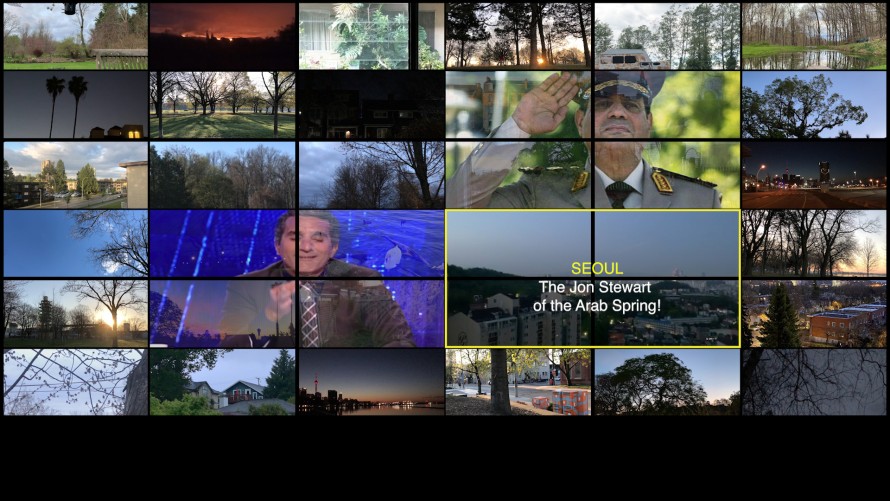
International Dawn Chorus Day by John Greyson
What effect did the global events of 2020 have on the submissions?
We expected a lot of Corona diaries. Ultimately, however, we only received a few and the ones we selected are very different from each other:
International Dawn Chorus Day by John Greyson uses a format we have probably all grown tired of during the last year: the video conference. Except it isn’t people who meet in his film, but birds that, scattered around the world, exchange rumours and observations about those who are being politically persecuted at home and in exile. It’s a very moving film about solidarity within and with the queer community, both fleet-footed and deeply sad, tragic and highly political.
Ventana (Window), on the other hand, deals with the past year in a very different way. The director Edgar Jorge Baralt used the time of the lockdown to sort through photos and, out of this sorting and reminiscing, a very poetic film emerged that is a window to the past but also, perhaps, a window to the future. Even if he doesn’t specifically address the lockdown, you can still sense it. And Vadim na progulke (Vadim on a Walk) is surely also a reflection on this lockdown year.
What is the selection of filmmakers like in general? Does it include some familiar faces?
A familiar face to Berlinale Shorts is, for example, director Ulu Braun. He presents Das Glitzern im Barbieblut (Glittering Barbieblood) in 2021. Braun comes from a fine art background and works a lot with assemblages. His films, of which we have already shown four in the past, resemble animated photo collages, with images composed of many layers and fragments. This time, the collage doesn’t appear so much on the visual level as in the narrative – in the combination of found and re-enacted material. In this way, he is opening a new chapter while, at the same time, remaining true to himself.
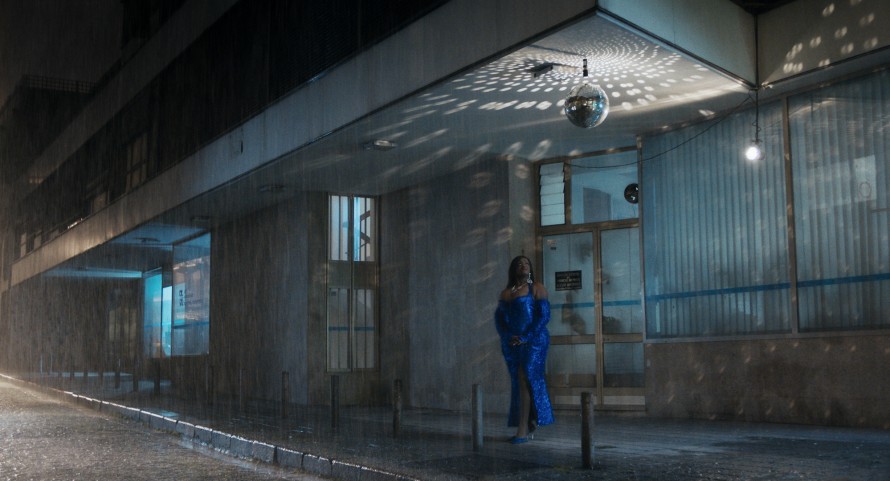
Diana Neves Silva in Luz de Presença (A Present Light) by Diogo Costa Amarante
Diogo Costa Amarante has already screened some of his films with us, too, and he won the Golden Bear in 2017. The following year, he was a member of the Berlinale Shorts jury. His film Luz de Presença (A Present Light) is once again borne by beautiful, poetic images and an almost magical atmosphere.
And Sasha Svirsky is also already known to the Berlinale Shorts audience. This year, he’s presenting his animated film Vadim na progulke (Vadim on a Walk). His previous film was an amusing, gaudy heroic story and so we were expecting something funny again. We were all the more amazed, therefore, to see the entirely different seriousness and perhaps even despair with which he cinematically processed the strange year of 2020.
The experimental film One Thousand and One Attempts to Be an Ocean by Wang Yuyan, whose work is appearing at the Berlinale for the first time, also comes across as a work of processing. It’s about the flood of information and images that constantly washes over our screens from the internet. It’s a very haptic film: you have the feeling the video material has been worked on until it became so fluid that it slips through your fingers and you have no alternative but to be carried away by it.
Bárbara Wagner and Benjamin de Burca, who won the Audi Award in 2019, feature in this year’s selection with One Hundred Steps. They come from an arts background and work with communities for whom music creates a sense of a collective identity. This time round, they have musicians encounter historically charged places which creates a very interesting tension as intangible cultural heritage enters into dialogue with buildings that are manifestations of power and privilege. In this way, the filmmakers question conventional historiography.
Some of the other films also contain an examination of history.
Yes, in Strange Object, Miranda Penell takes a close look at colonial history, analysing it in detail and thus refuting established interpretations. This film is part of a larger project on the subject on which she is continuing to work.
And in Al motociclista no le cabe la felicidad en el traje (Motorcyclist’s Happiness Won’t Fit Into His Suit) by Gabriel Herrera, history is rewritten in rather a mischievous and amusing way.
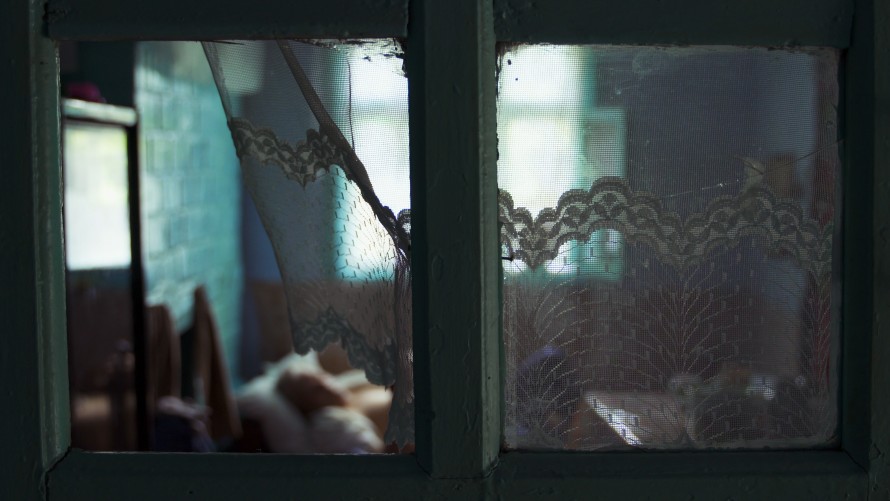
Nanu Tudor (My Uncle Tudor) by Olga Lucovnicova
And what about examinations of the present?
With her short film Deine Strasse (Your Street), Güzin Kar, who so far has made feature films and TV-series and regularly writes columns for Swiss newspapers, takes a very intense look at the recent past which also, unfortunately, is our present. The film deals with the racist arson attack in Solingen in 1993, in which five people were killed. It’s about the culture of remembrance – or rather, the culture of repressing memory that is connected with this event and once again makes it clear that these attacks, murders and crimes are not isolated cases. Kar’s brilliantly written text, voiced by the writer Sibylle Berg, really hits you in the pit of your stomach.
Physical Traumas on your own body and traumas within families, as well as the effects of toxic masculinity, are subject matters in the films A Love Song in Spanish, Nanu Tudor (My Uncle Tudor) and also in the animation Easter Eggs.
Nanu Tudor (My Uncle Tudor) is about a story of abuse inside someone’s own family. The film is not only an encounter with the perpetrator but also a confrontation with the threat that carefree moments and unadulterated memories are no longer possible. Once the silence is broken, the idyll becomes cracked and the big lies of life are difficult to sustain. But at the same time, the film represents a liberation for the director Olga Lucovnicova that wouldn’t have been possible if she had not spoken out.
A Love Song in Spanish also deals with memories that have been inscribed on the body. It’s about the war trauma of an entire society which has been kept silent and in spite of this – or precisely because of it – destroys families. For the destructive power of war also affects its perpetrators. Ana Elena Tejera cautiously approaches the fate of her grandparents by cinematic means and allows images and gestures to speak so that the speechlessness can be overcome.
The animated film Easter Eggs portrays an unequal friendship between two boys at different ends of puberty. What do I allow to be done to me and what not? Why am I the way I am even though I don’t want to be this way? And how do I deal with the anger that is inside me? Despite its heavy subject matter, the film leaves you almost enchanted.
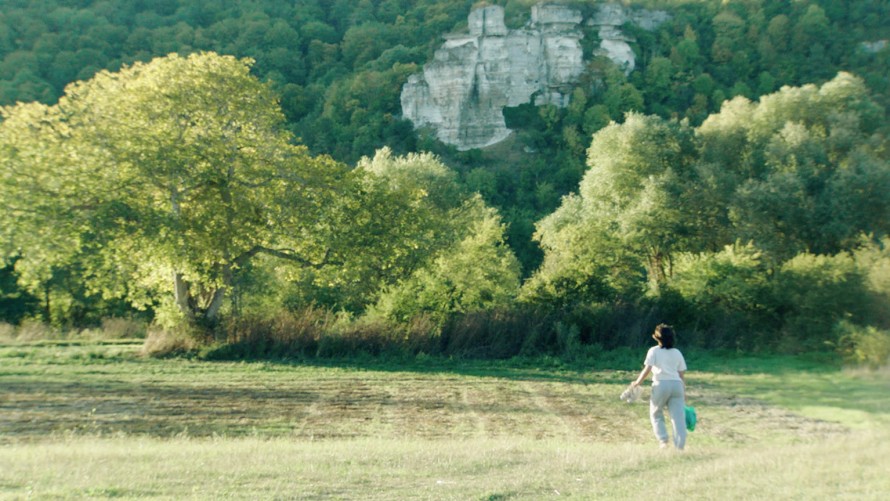
Lucie Vincentelli in Si t’as un coeur (Young Hearts) by Émilie Vandenameele
Si t’as un coeur (Young Hearts) takes the emotional chaos of puberty to extremes.
Exactly, the film evokes the atmosphere of a hot summer that will come to an end at some point, even if you still haven’t managed to snog anyone. The director Émilie Vandenameele comes from a theatre background and that’s perhaps what makes this film so wonderfully strange in the way it follows these young people in motion, but also in how the dramaturgy wildly gallops through the film. It almost gives you the feeling of watching a dance piece.
Blastogenese X by Conrad Veit and Charlotte Maria Kätzl is also a kind of dance performance. The film observes creatures which break the boundaries between humans and animals, male and female. The movements are so magical and the costumes so imaginative that you find yourself surrendering to this constructed natural spectacle with a smile. For me, this film is a special example of the illusion machine that is cinema.
The creation of illusions is also the topic of Rehearsal by Michael Omonua which is, among other things, about a faith healing – or the staging of a faith healing. The film plays with the performative elements of the church and religious services and the various ways in which faith can be manipulated and instrumentalised.
To return to coming of age: this topic also plays a central role in some of the other films.
In Zonder Meer, four-year-old Lucie encounters the concept of death for the first time. I’ve rarely seen children act so naturally in front of the camera as in this film. You don’t feel that anything has been staged. At the same time, the pictures are very carefully composed and filmed using a tripod. How director Meltse Van Coillie managed to do this without losing the wonderful free-flowing quality of her film is a mystery to me.
The autobiographically inspired Xia Wu Guo Qu Le Yi Ban (Day Is Done) by Zhang Dalei has a similar effortlessness. It’s also a summer film, by the way. Here, the focus is on a young man on the cusp between puberty and adulthood. Accompanied by his family, he pays a final visit to his grandfather before he leaves home to go to university. The film works with nuances, looks and intimations. A sense of melancholy hangs in the air. There is this wonderful instance when the grandfather wants to share a moment with his grandson and asks him: “Come on, show me the film you’ve made.”
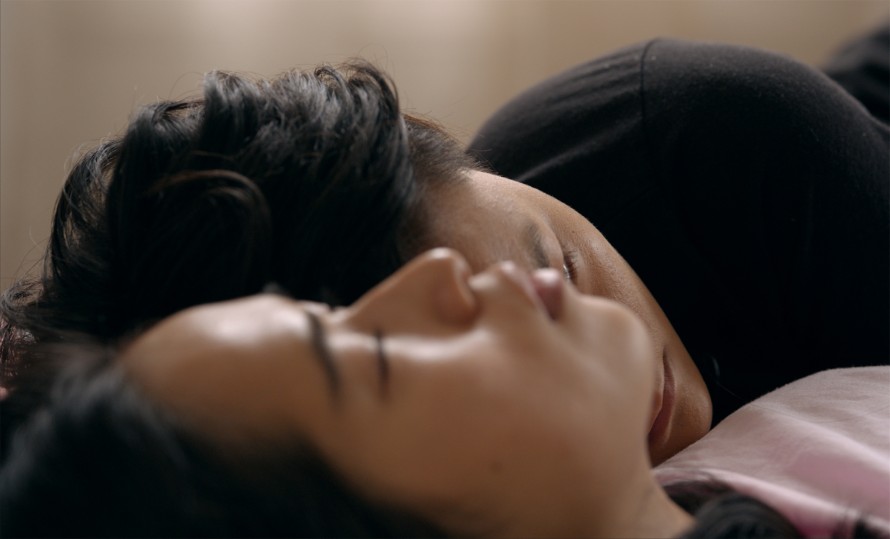
Joyce Keokham and Tina Wonglu in More Happiness by Livia Huang
Livia Huang takes up this motif in More Happiness when, sitting at the kitchen table one evening, a young woman asks her mother to tell her about how her parents met. This is an encounter between a daughter who grew up in America and her mother who immigrated there from China. Both have a different view of life and love. At some point, the touching sentence is uttered: “Mum, teach me how to be a person.” And the mother replies: “You don’t need someone to teach you how to be a person. You're already smart enough.”
Das Glitzern im Barbieblut is also about a mother and her two daughters, one of whom eventually sets out to explore the world, although she is actually still far too young to do so. But the mother trusts her and lets her go. The film is very complex, playing on several levels, and refuses to adhere to the usual narrative conventions.
Do you always have to understand a film immediately?
I think that’s often impossible. Some films first have to linger for a while before their meaning can unfold. Sometimes, you can only find your way into a film via a discussion about it afterwards. I tend to watch short films several times – and then I notice that they’re actually not as complicated as I thought the first time round.
Les Attendants (The Men Who Wait) by Truong Minh Quý is such a film. When I saw it for the first time, it amazed me but also disturbed me because it is working with many taboo images. You could dismiss it as a cheap provocation. But for this it is far too precise in its cinematography, far too complex in the topics it interweaves and also far too tender in the way it is directed. For me, this film is about the longing for comfort – a kind of comfort which maybe can be found in a sexual encounter.
What are your wishes regarding the audience in terms of how you would like them to approach the films?
Actually, I don’t have to wish for much because we have such a great audience. I’m really moved and impressed by how full the cinemas are at our screenings. We have regular attendees and faces you keep seeing again in our audiences, and we receive honest feedback, both positive and negative. In this way, we’re inspired and challenged as a section every year. We have an audience that doesn’t want to be served, but instead wants to be engaged.
The short film is a form that is predestined to invite you to discover things and get involved in unfamiliar perspectives and approaches. If that’s something you’re looking for, you’ll definitely find it at Berlinale Shorts. So I’m not wishing for anything else except that the audience continues to remain as open and curious as they already are.
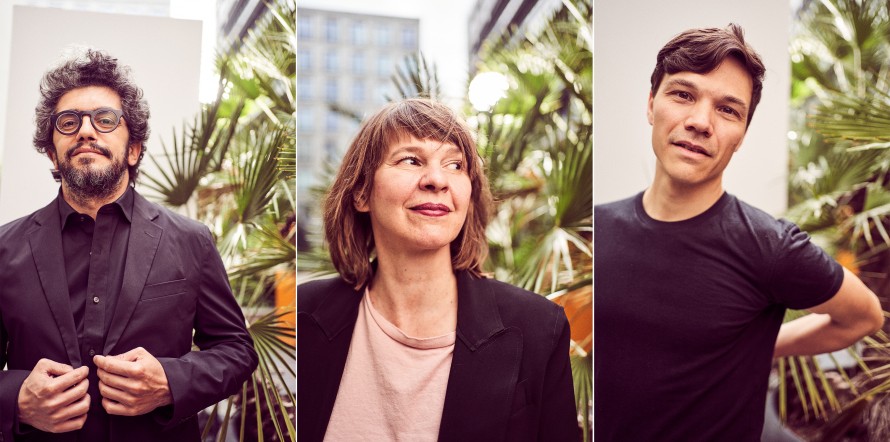
The 2021 International Short Film Jury: Basim Magdy, Christine A. Maier and Sebastian Urzendowsky
The short films will be presented to the public in the summer, with this year’s Berlinale being a festival in two stages due to the pandemic. What will happen between March and June? How are the two events being linked, and in what way are the filmmakers and films being supported?
The films are being shown from March 1-5 to an industry audience. During this time, the winners of the Bears will also be announced. I’m delighted that we have secured the Egyptian artist Basim Magdy, the Austrian cinematographer Christine A. Maier and the German actor Sebastian Urzendowsky as a jury that will look at the films from very different perspectives.
We’re hoping that, from March 6, the films will travel the world and be screened elsewhere. We will be supporting them by keeping our social media community up-to-date about when and where the films can be seen.
We’ll also be publishing interviews with the filmmakers and texts about the films on our blog so that people who want to can find out even more about them. And in the summer, this blog will also be the place where sketches by artist Dorothea Schulz – who draws in the dark of the cinema while the films are lighting up the screen – will once again be featured so that we can kind of re-watch the films through her eyes.